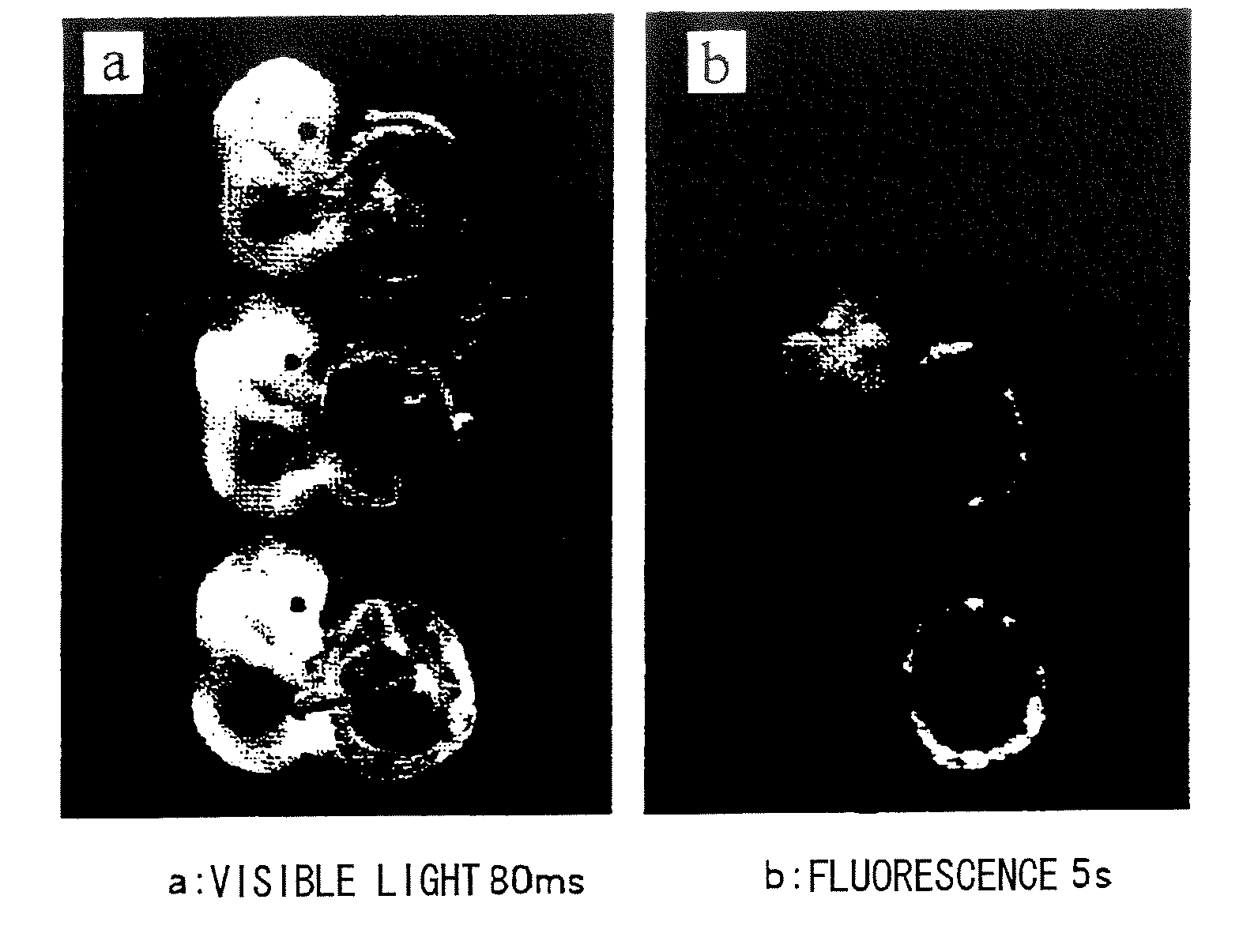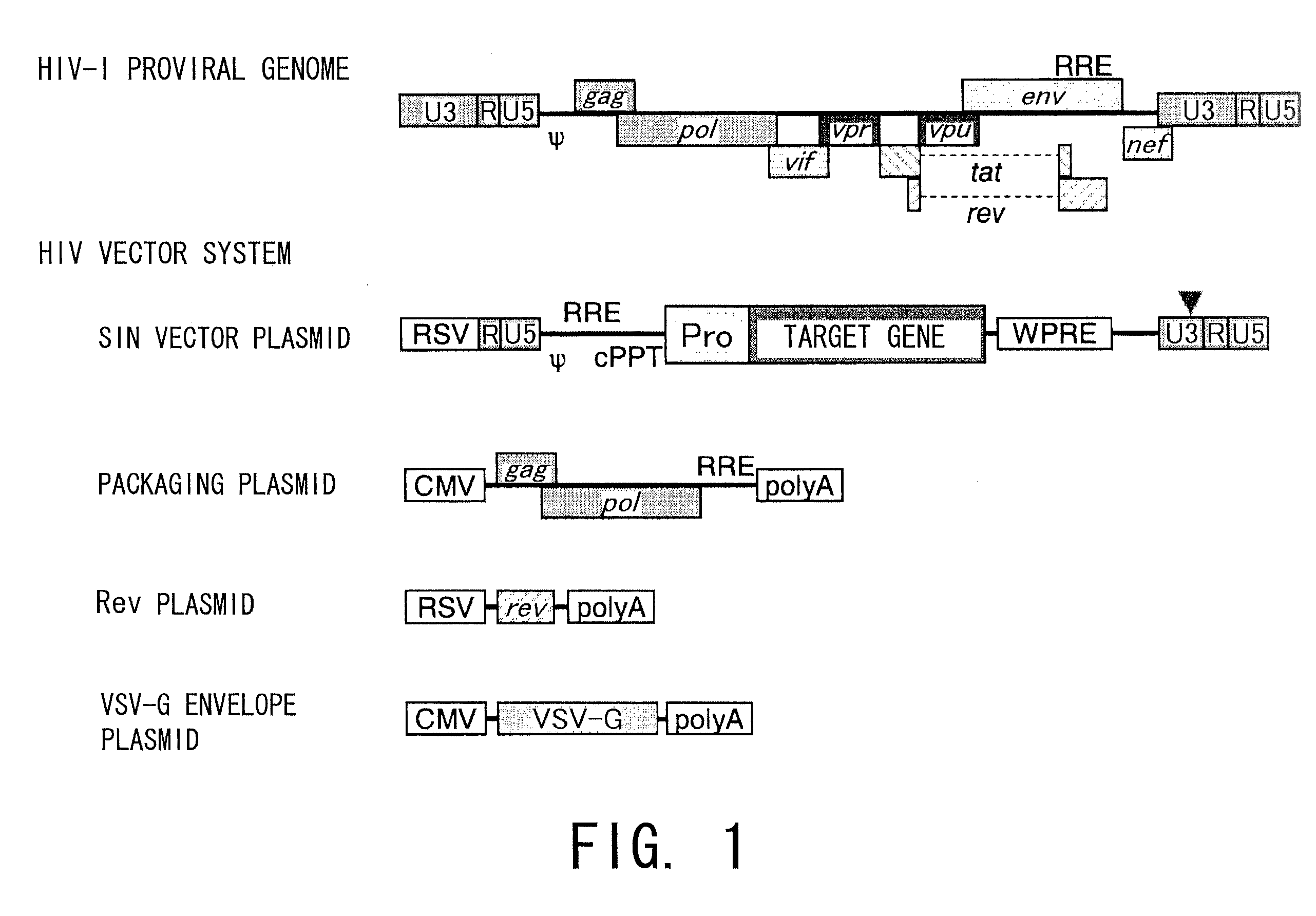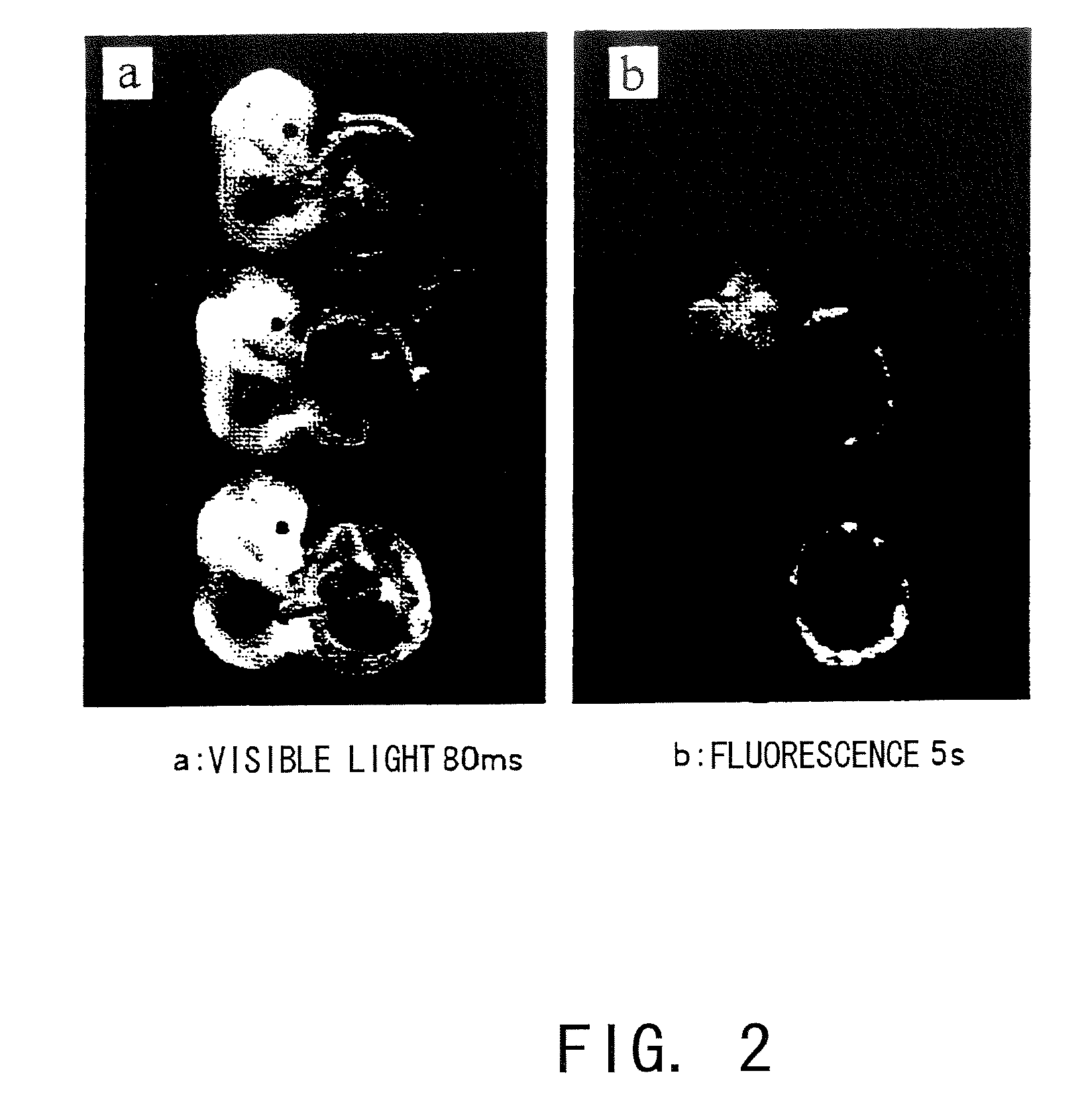Trophectodermal Cell-Specific Gene Transfer Methods
a technology of trophectodermal cells and gene transfer methods, applied in the field of trophectodermal cell specific gene transfer methods, can solve problems such as the silencing of gene expression, and achieve the effect of convenient operation
- Summary
- Abstract
- Description
- Claims
- Application Information
AI Technical Summary
Benefits of technology
Problems solved by technology
Method used
Image
Examples
example 1
Infection and Evaluation of LV-CAG-EGFP
[0119]Introduction of a lentivirus (LV) carrying the GFP gene (LV-CAG-EGFP, which was constructed by the method described in Molecular Therapy 2003, 8; 666-673; SIN lentivirus vector plasmid introduced with an EGFP-encoding cDNA under the control of a CAG promoter was constructed and combined with a packaging plasmid, Rev expression plasmid and VSVG expression plasmid; the mixture was introduced into 293T cells by the calcium phosphate method; viral particles released to the culture supernatant were collected and concentrated by ultracentrifugation; for the plasmids, see FIG. 1) was attempted using TG method and the method of the present invention. The gene used in this experiment was the GFP gene, and areas introduced with the gene emit green fluorescence. Subjects introduced with the gene by each method were examined for the infection site and evaluated for infection efficiency by microscopic observation, tissue sections, PCR, and such.
[0120]...
example 2
Rescue of ER 2—and p38α-Knockout Mice
[0121]Next, the present inventors speculated that introducing a gene of interest by the methods of the present invention into mutant mice that were originally embryonic lethal due to placental abnormality could allow their development and postnatal analysis. ER 2-knockout mice and p38α-knockout mice were used for these experiments.
(1) ER 2-Knockout Mice (FIG. 4)
[0122]ER 2-knockout mice have been reported to be embryonic lethal around E10.5 due to placental abnormality (Hatano N. et al., Genes Cells. 2003 November; 8(11): 847-56). According to Hatano N. et al., labyrinthine layers are thin in the knockout placenta; the heart wall of the fetus becomes thinner and its development is retarded; and thus embryos after E1.5 are undetectable. The thinning of labyrinthine layers and heart wall abnormality were improved by the tetraploid rescue. Therefore, Hatano N. et al., argued that the heart wall thinning was a secondary abnormality as a result of the ...
PUM
 Login to View More
Login to View More Abstract
Description
Claims
Application Information
 Login to View More
Login to View More - R&D
- Intellectual Property
- Life Sciences
- Materials
- Tech Scout
- Unparalleled Data Quality
- Higher Quality Content
- 60% Fewer Hallucinations
Browse by: Latest US Patents, China's latest patents, Technical Efficacy Thesaurus, Application Domain, Technology Topic, Popular Technical Reports.
© 2025 PatSnap. All rights reserved.Legal|Privacy policy|Modern Slavery Act Transparency Statement|Sitemap|About US| Contact US: help@patsnap.com



